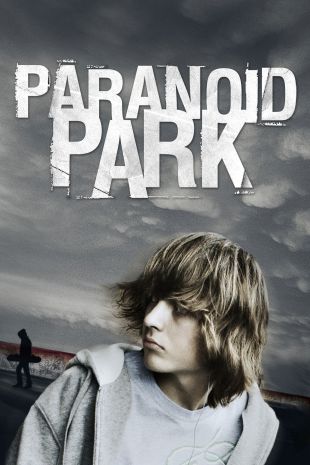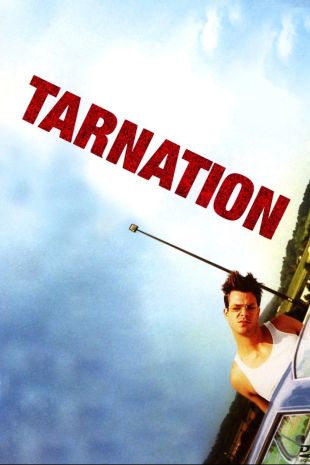A director who is capable of crafting both deeply unconventional independent films and mainstream crowd-pleasers, Gus Van Sant has managed to carve an enviable niche for himself in Hollywood. In the years that followed his debut in 1985 with Mala Noche, Van Sant established himself as one of the most vital directorial voices in the U.S.
The son of a traveling salesman who rapidly worked his way up the corporate ladder into middle-class prosperity, Van Sant was born in Louisville, KY, on July 24, 1952. Due to his father's job, the family moved continuously during Van Sant's childhood. One constant in the director's early years was his interest in painting and Super-8 filmmaking; while still in school he began making semi-autobiographical shorts costing between 30 and 50 dollars. Van Sant's artistic leanings took him to the Rhode Island School of Design in 1970, where his introduction to various avant-garde directors inspired him to change his major from painting to cinema.
After spending time in Europe, Van Sant went to Los Angeles in 1976. He became fascinated by the down-and-out residents of L.A., especially in context with the more ordinary, prosperous world that surrounded them; his film Mala Noche (1985) would reflect his observation of these societal outcasts.
Mala Noche was made two years after Van Sant went to New York to work in an advertising agency; saving 25,000 dollars during his tenure there, he was able to finance his tale of doomed love between a gay liquor store clerk and a Mexican immigrant. The film, which was taken from Portland street writer Walt Curtis's semi-autobiographical novella, featured some of the director's hallmarks, notably an unfulfilled romanticism, a dry sense of the absurd, and the refusal to treat homosexuality as something deserving of judgment.
Shot in black-and-white, Mala Noche earned its director almost overnight acclaim on the festival circuit, with the Los Angeles Times naming it the year's Best Independent Film. The film's success attracted Hollywood interest, and Van Sant was briefly courted by Universal; the courtship ended after Van Sant pitched a series of project ideas (including what would later become Drugstore Cowboy and My Own Private Idaho) that the studio declined to take interest in.
Van Sant reacted by moving to Portland, Oregon, where he set up house and began giving life to the ideas rejected by Universal.
With the assistance of independent production company Avenue, the director made Drugstore Cowboy, his 1989 film about four drug addicts who rob pharmacies to support their habit. Cowboy met with great critical success; in addition to furthering Van Sant's reputation as a gifted director, it helped to revive the career of Matt Dillon, who was remarkable as the junkie leader who decides to come clean. The similarly acclaimed My Own Private Idaho (1991) centered around the dealings of two male hustlers (played by River Phoenix and Keanu Reeves), and was a compelling examination of unrequited love, alienation, and the concept of family. The film won him an Independent Spirit Award for his screenplay (he had won the same award for his Drugstore Cowboy screenplay), as well as greater prestige.
Van Sant's next project, a 1994 adaptation of Tom Robbins' Even Cowgirls Get the Blues, was an excessive flop, both commercially and critically. Featuring an unusually large budget (for Van Sant, at least) of 8.5 million dollars and a large, eclectic cast including Uma Thurman, John Hurt, and Keanu Reeves, the film was worked and then reworked, but the finished product nonetheless resulted in something approaching a significant disaster.
Fortunately for Van Sant, his next project, 1995's To Die For, helped to restore his luster. An adaptation of Joyce Maynard's novel, the black comedy starred Nicole Kidman as a murderously ambitious weather girl. It was Van Sant's first effort for a major studio (Columbia), and its success paved the way for further projects of the director's choosing. The same year, he served as executive producer for Larry Clark's Kids; it was a fitting assignment, due to both the film's subject matter and the fact that Clark's photographs of junkies had served as reference points for Van Sant's Drugstore Cowboy.
In 1997 came true mainstream acceptance for the director, thanks to Good Will Hunting. Starring and written by Matt Damon and Ben Affleck, the film -- about a troubled, blue-collar genius -- was a huge critical and commercial success. In addition to taking in more than 220 million dollars worldwide, it received a number of Academy Award nominations, including a Best Director nomination for Van Sant. It won a Best Screenplay Oscar for Damon and Affleck, and a Best Supporting Actor Oscar for Robin Williams. The unprecedented success of Good Will Hunting allowed Van Sant to pursue whatever project his heart desired, which ended up being an unusually faithful remake of the Alfred Hitchcock classic Psycho. As opposed to reinterpreting the 1960 film, however, Van Sant opted to recreate the film shot-for-shot, in color, with a cast of young Hollywood A-listers. His decision was met with equal parts curiosity, skepticism, and derision from industry insiders and outsiders alike, and the finished result met with a similar reception.
Van Sant fared somewhat better with 2000's Finding Forrester, a drama about a high-school student from the Bronx (Rob Brown) who becomes unlikely friends with a crusty, reclusive author (Sean Connery). Critical response was mixed but generally positive, singling out Van Sant's skill at melding the performance styles of first-time actor Brown and Hollywood legend Connery; however, those same reviewers were less impressed with the script's schematic, Scent of a Woman-meets-Good Will Hunting template.
In any event, Van Sant decided to leave behind big-budget studio filmmaking for his next two features. Inspired by the works of Hungarian director Bela Tarr and American maverick John Cassavetes, Van Sant retreated to the deserts of Argentina, Utah, and Death Valley for 2002's Gerry, a loosely devised, largely improvised feature in which stars Matt Damon and Casey Affleck wander through the desert, discussing Wheel of Fortune, video games, and nothing in particular. Premiering at the Sundance Film Festival, the film earned as much derision as it did praise, polarizing audiences with its elliptical storyline.
It took Gerry over a year to make it to theaters, in which time Van Sant began production on his next film, the controversial Elephant. Approached by HBO and producer Diane Keaton to craft a fictional film based on the 1999 Columbine High School massacre, the director chose to shoot in his hometown of Portland, employing dozens of untrained teen actors to chronicle an "ordinary" high-school day. Melding improvisational long takes like those in Gerry with Savides' fluid camerawork, the finished film provoked strong reactions from audiences at the 2003 Cannes Film Festival, who either embraced or rejected Van Sant's aesthetic decision not to offer a definitive rationale for his characters' homicidal tendencies.
2008 saw the release of two more Van Sant films: Paranoid Park and Milk. Paranoid Park was a small film utilizing a largely on-professional cast, but Milk signified a resounding return to commercial filmmaking. Many directors tried to get the life story of slain San Francisco politician Harvey Milk to the big screen, but it was Van Sant who finally pulled it off. The film, starring Sean Penn as Milk, opened to strong reviews, and garnered a number of year-end awards including eight Oscar nominations. In addition to Best Picture, Best Original Screenplay, and Best Actor nods, the Academy bestowed Van Sant's with the second Best Director nomination of his career. In 2011, Van Sant returned to the director's chair for the unusual fantasy Restless, with Mia Wasikowska and Henry Hopper as a couple whose paths intersect with the ghost of a WWII kamikaze pilot.



